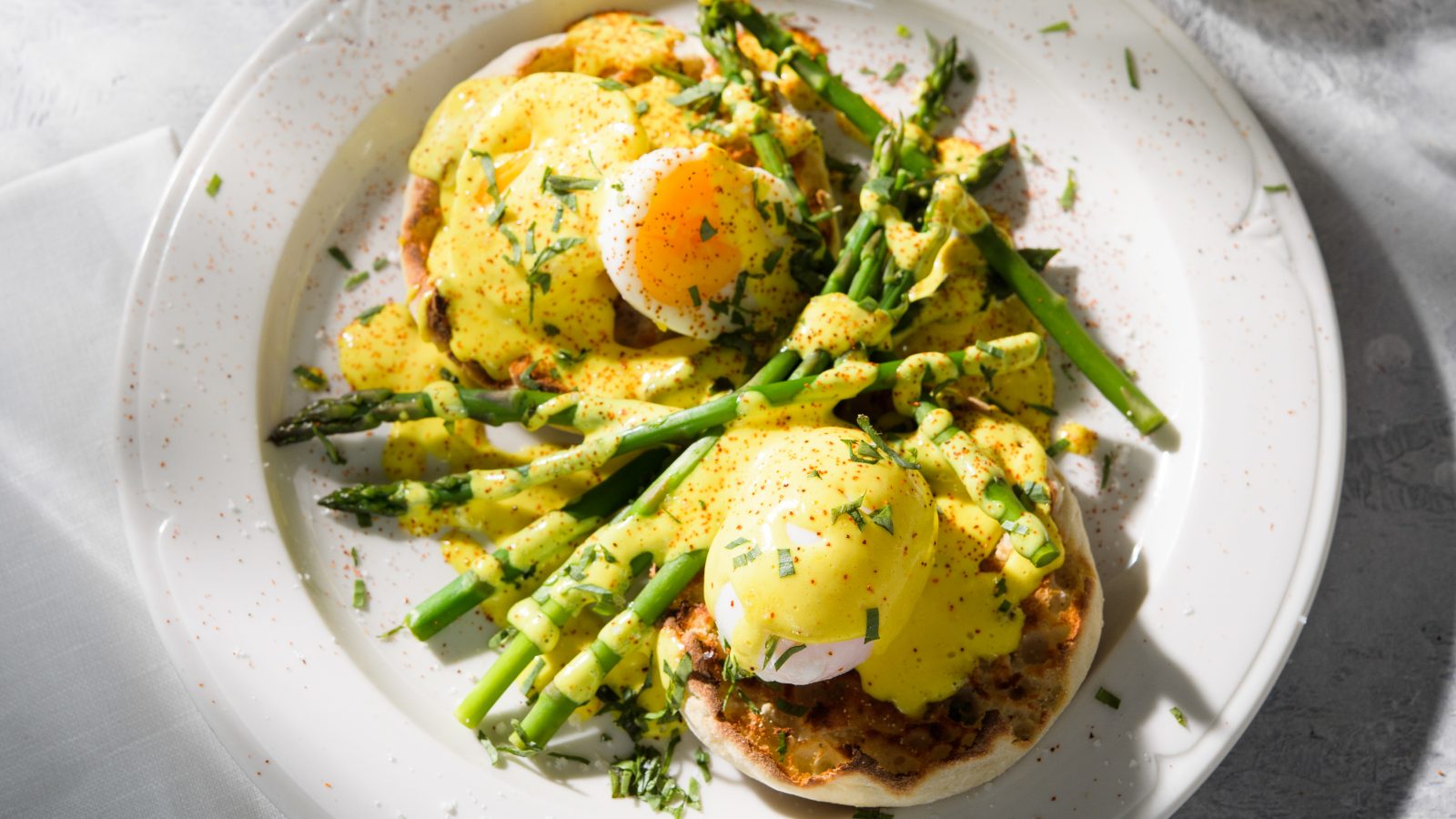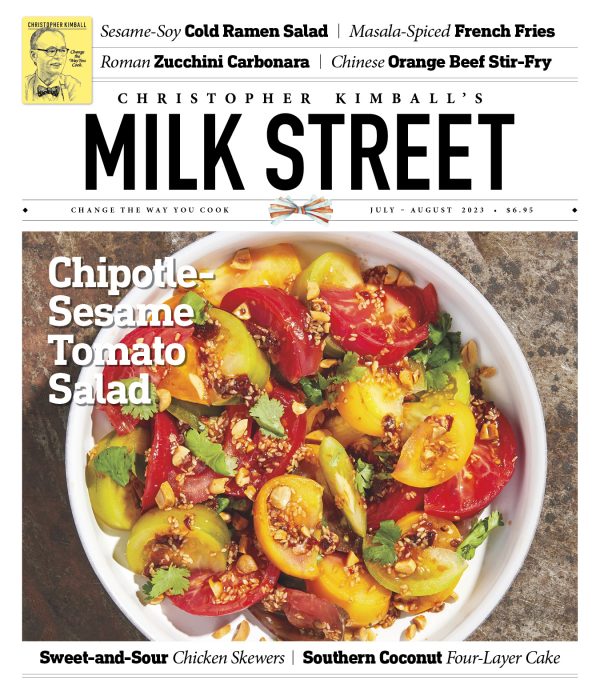Your email address is required to begin the subscription process. We will use it for customer service and other communications from Milk Street. You can unsubscribe from receiving our emails at any time.




Sous Vide Eggs Benedict with Asparagus
This recipe is free for a limited time. 12 WEEKS FOR $1 TO ACCESS EVERY MILK STREET RECIPE. Learn More.
With precise requirements for timing and temperature, making hollandaise and poached eggs for eggs Benedict can be a high-maintenance affair. The gentle, constant heat of a sous vide circulator is the perfect solution, providing a surprisingly easy, hands-off approach. Half an hour in the water bath yields gently warmed ingredients that can be blitzed into a silky-smooth hollandaise with an immersion blender, as well as the perfect setup for poaching eggs in their shells and rendering fresh asparagus deliciously tender-crisp. Be sure to gather the necessary equipment before getting started: an immersion circulator, a vacuum sealer, an immersion blender and a 24-ounce heatproof jar with a mouth wide enough to accommodate the blender. The eggs take some time and patience to peel, so in the meantime, keep the jar in the water bath in order to keep the sauce ingredients warm. Add some toasted English muffins and an entire Sunday brunch can be cooked in just one tub of water!
4
Servings
45 minutes
-
10
tablespoons salted butter, cut into 1-tablespoon pieces
-
4
large egg yolks, plus 8 large eggs in their shells
-
2
tablespoons lemon juice
-
1½
teaspoons white vinegar, white wine vinegar or cider vinegar
-
¼
teaspoon dry mustard
-
⅛
teaspoon cayenne pepper
-
Kosher salt
-
12
ounces medium asparagus, trimmed
-
¼
cup lightly packed fresh tarragon or fresh dill, torn
-
4
English muffins, halved and toasted
-
Sweet paprika, to serve
-
01In a heatproof 24-ounce glass jar that can accommodate an immersion blender, combine the butter, egg yolks, lemon juice, vinegar, 2 tablespoons water, dry mustard, cayenne and ¼ teaspoon salt; cover with the lid and seal tightly. Do not shake or stir.
-
02Place the jar in a straight-sided heatproof container that is about 10 inches in diameter and 5 inches high (a Dutch oven works well). Place a weight on the jar so it will remain in place when water is added to the container, then fill the container with warm water to within about 2 inches of the jar’s lid.
-
03Attach the immersion circulator to the container and set to 165°F. When the water reaches temperature, use a slotted spoon to lower the whole eggs into the water. Cook for 30 minutes. Meanwhile, in a heatproof vacuum-seal bag, arrange the asparagus in a single layer. Seal according to the manufacturer’s instructions.
-
04After the eggs and hollandaise ingredients have cooked for 15 minutes, lower the asparagus bag into the water. If floating, weigh it down with a small plate or bowl. Fill a medium bowl with ice water.
-
05When cooking is complete, use a slotted spoon to transfer the eggs to the ice water; cool for 1 minute. Meanwhile, using tongs, remove the asparagus bag; leave the jar in the water but turn off the circulator. Remove the eggs from the ice bath and carefully peel them; set aside on a clean kitchen towel.
-
06Remove the jar from the water and remove the lid. Using an immersion blender, blend the ingredients, scraping down the sides of the jar as needed with a small silicone spatula, until the hollandaise is smooth and emulsified, about 1 minute.
-
07To serve, place a split English muffin on each serving plate. Place 1 egg on each English muffin half. Carefully open the asparagus bag and, using tongs, divide among the plates. If the hollandaise has separated slightly during standing, blend again until smooth. Spoon sauce over the asparagus and each egg-topped muffin. Sprinkle with tarragon and a pinch of paprika.






